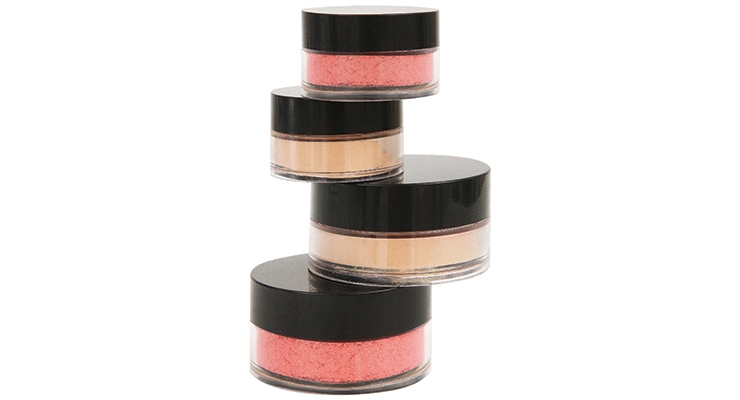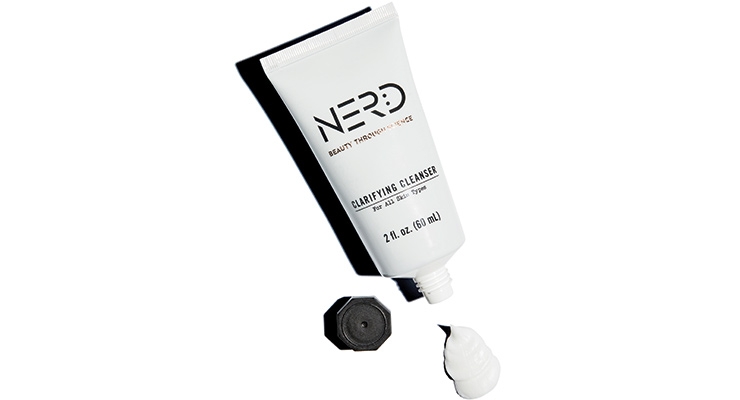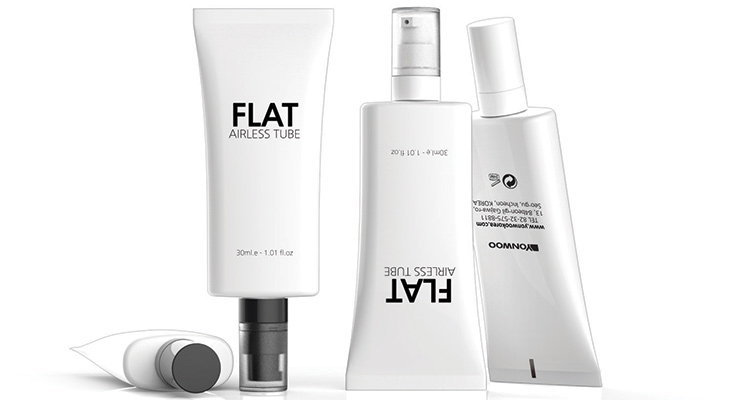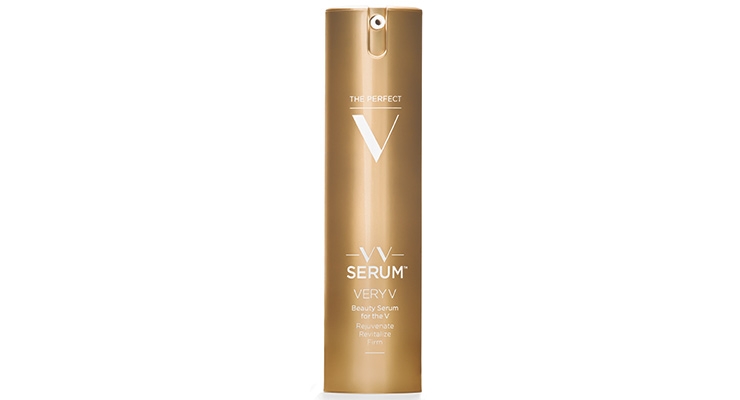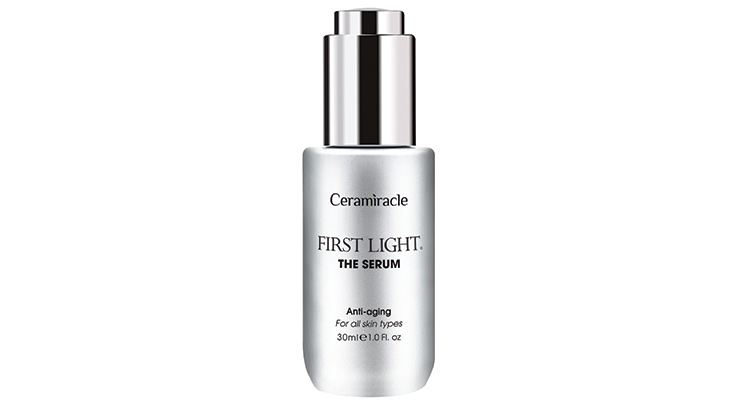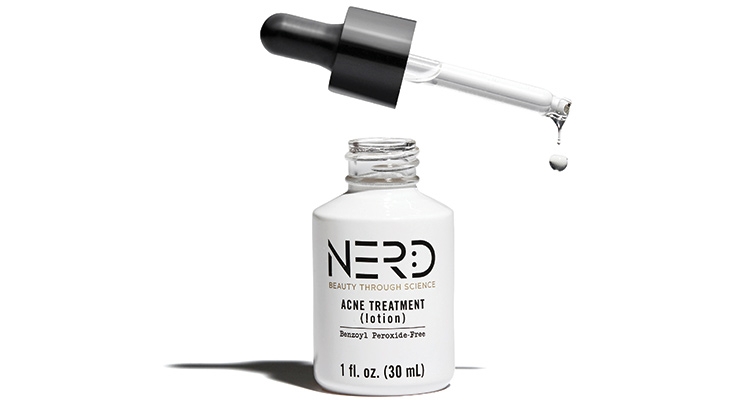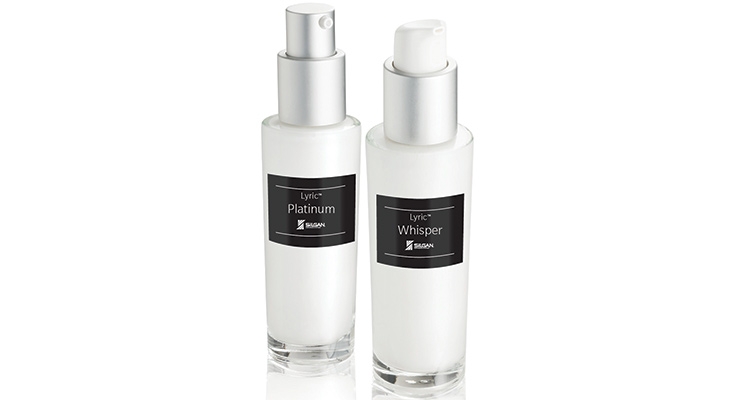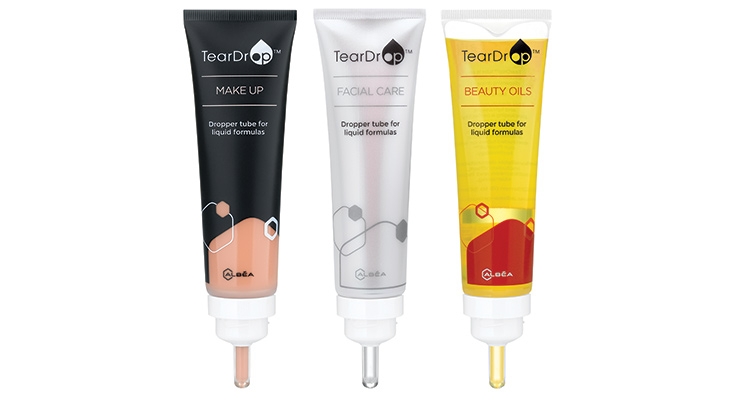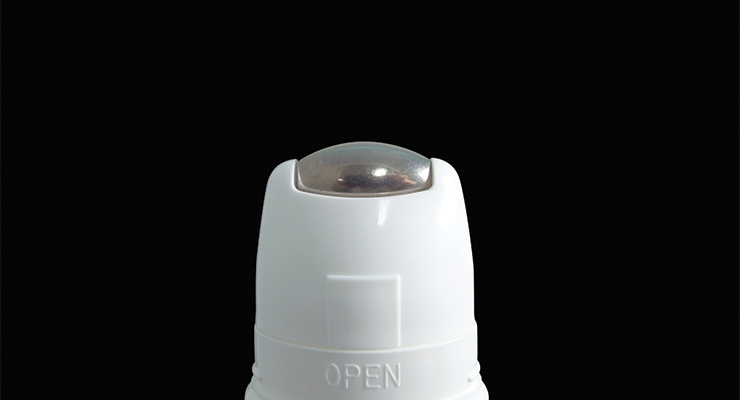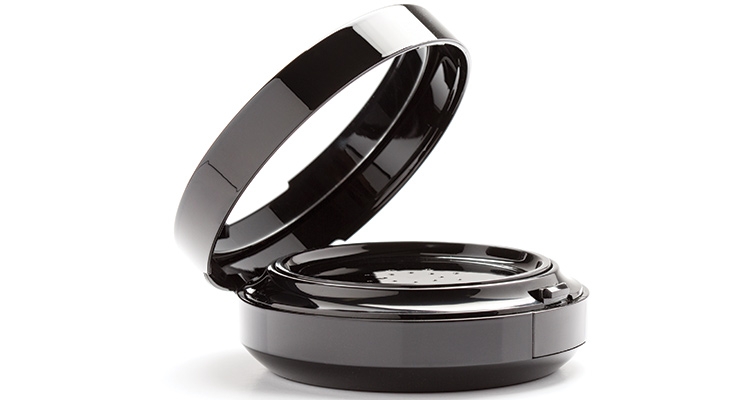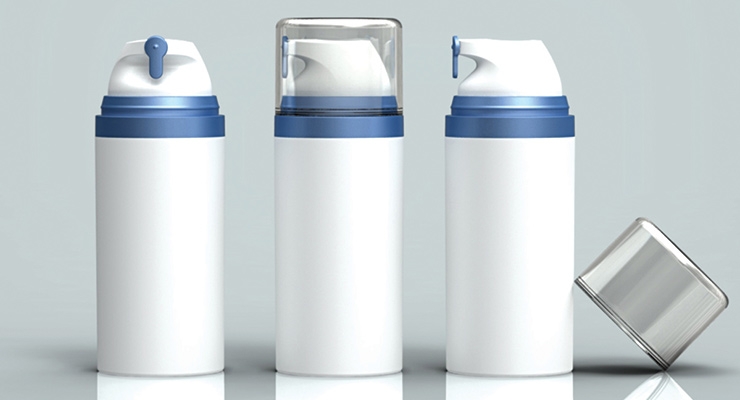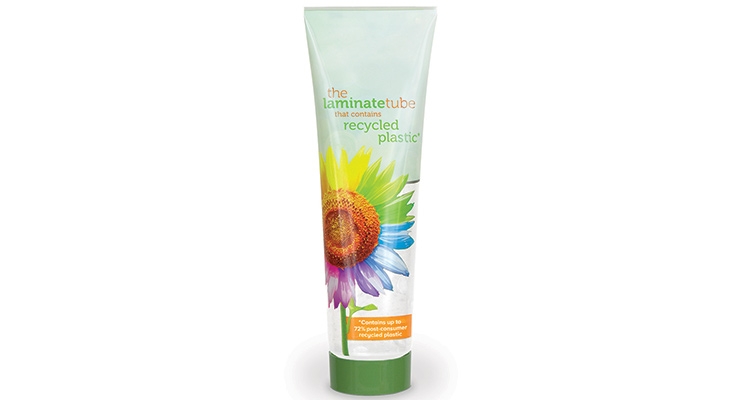Marie Redding, Associate Editor11.01.17
The skincare market is on the rise, analysts say. The global market for skincare products is forecasted to reach $179 billion by 2022, growing at a CAGR of 4.7%, according to Allied Market Research’s Skin Care Products Market Report. The facial skincare category represents a major portion of the overall market, the report states, and the face creams segment is projected to grow at a CAGR of 4.9% through 2022.
The need for packaging for skincare products is also on the rise. The report by Research and Markets, The Global Skin Packaging Market 2016-2022, says the global skincare packaging market will grow at a CAGR of 5.5% during the forecast period, up from $7.67 billion in 2016 to $10.57 billion in 2022.
Skincare brands are facing increased competition, and packaging suppliers are offering brands ways to differentiate with new designs that offer convenience, ease-of-use and advanced capabilities. Packaging for skincare products includes a wide range of options, to accommodate different product formats and formulations. Nerd Skincare, for example, uses bottles, tubes, jars and droppers in glass, plastic and metal.
Suppliers are offering stylish bottles for lotions, jars with luxe details for creams, and tubes that come equipped with applicators. More advanced airless dispensing systems, dropper applicators, and dispensing caps are providing solutions for certain types of products. In addition, suppliers aren’t forgetting about sustainability, which is always an important concern for many brands.
Packages Most Often Requested for Skincare
Bottles—especially airless bottles—are being requested often for skincare products, as expected. Since serums and facial oils are trending, more brands are using classic dropper bottles as well (more about droppers below). Suppliers are also seeing a greater demand by skincare brands for tubes.
Curt Altmann, vice president of global development, Yonwoo/PKG, says, “Anything that enhances the user’s experience with a product is key for a great skincare package. It can be a brush or sponge head, on a tube with a pump, for example.” He continues, “Skincare brands are very interested in innovative applicators, combined with pumps—and tubes are being requested most often—more than bottles. We just built a new tube plant that has a 400-million-piece annual capacity, to meet market demands.”
Maud Lelièvre, marketing manager, Cosmogen, says that when a tube includes an applicator, it conveys efficacy. “We see a demand for all types of packages with applicators, and we offer a range of options. It is a continuing trend,” she says.
The team at Albéa also says there is a greater interest from skincare brands in using tubes. “Tubes offer convenience, especially when paired with a pump. We now offer airless pump tubes in a variety of sizes, and with roll-on applicators,” says Christine Gichuki, senior communications manager, Albéa.
Denise Greenwell, brand marketing director, consumer packaging, Berry Global, Inc., also mentions the popularity of tubes. “We see a rise in the demand for tubes, especially with advanced decorations. We offer innovative technologies that include decorating tubes with embossing, hidden side seams, tactile surfaces and foils. This aligns with current market trends and consumer needs,” she says.
Kristy Hooper, senior global product manager, Silgan Dispensing Systems, stresses the importance of performance. “We conducted research that shows consumers expect cleanliness, comfort and control when using skincare products. We call it the 3 ‘C’s’ in skincare packaging.” She adds, “Our treatment pumps generally offer an improved experience over other packaging solutions in these areas.”
Although skincare brands need a variety of packages to accommodate different types of products, a luxe look is always key, suppliers say.
Berry’s Greenwell says, “Premiumization has been a consistent trend in skincare. We see an upswing in customers using our glass-like PET jars. They provide a high-end premium look at a reasonable cost.”
Matteo Moretti, CEO, Lumson, says his customers often request packages with high-end looks. “Bottles are more often requested than jars for skincare products. We’re also seeing a high demand for premium glass and other types of high-end packaging,” he says.
Marianna Cilauro, vice president of business development, APC Packaging, says many skincare brands are using various types of decorating techniques to give bottles and jars high-end looks. “We offer vacuum metallizing combined with a gradient spray. Add a silk-screen process, and you will have a custom, high-end look—especially when these processes are done on a double-wall bottle,” she says. Cilauro adds, “Often, the ‘magic’ occurs not in finding a new decorating technique, but in the ability of a supplier to execute a brand’s vision.”
Atsko Fukada, senior director, Takemoto Packaging, sees a slight decrease in the use of jars for skincare. “Bottles are more popular right now, for us—we are selling more bottles for skincare products than both jars and tubes,” she says.
Jae Chong, senior vice president, global skincare division, HCT Group, says, “Our skincare customers are mainly focused on finding airless delivery systems that protect and preserve their formulations. Bottles and jars are most often requested—paired with airless systems.”
When tubes are requested, Chong sees an increase in the demand for HCT’s aluminum tubes. “Our aluminum tubes are popular right now. They have a clinical feel, which is appealing to skincare brands,” he says.
Airless is Always in Demand
Always popular in skincare, the demand for airless packaging isn’t showing any signs of slowing. The global market for airless packaging is projected to grow to reach $6.34 billion, progressing at a CAGR of 5.5% through 2024 according to a report by Transparency Market Research.
Facial skincare products are typically associated with airless packaging; however, one new product looks like a high-end facial serum, but it is meant to apply to the skin in another area—a woman’s bikini line, and surrounding area. VV Serum by The Perfect V is “beauty serum for the V,” the brand says. It is PH-balanced and paraben-free, and claims to smooth fine wrinkles, brighten, condition, and temporarily firm the skin. It contains elderflower extract, bilberry, sea buckthorn, and organic licorice root extract. V-Skin’s VV Serum is in an elegant bottle with an airless pump dispensing system. The plastic bottle has a metallized bronze gold finish. “I chose this package because it looks sleek, feminine and powerful,” says Avonda Urben, founder, V-Skin.
Madonna just launched her MDNA Skin line in the U.S. The line includes Rose Mist, a facial toner, in an airless bottle with a misting pump.
“Facial mists and makeup setting sprays are among the new types of products driving the demand for bottles with airless pumps,” says Albea’s Gichuki.
Lumson’s Moretti says, “Requests for airless packaging are rising consistently. This is due to the many undisputed advantages that an airless dispensing system provides, for many different types of products.” The supplier’s options include two different types of airless systems—a pouch, which is a bag-in-bottle dispensing system, and a piston system. Lumson also recently developed an innovative airless jar, Envers. It looks just like a jar, but it works like a bottle—and it is equipped with a pump mechanism.
Lumson offers bottles in different shapes and materials, with coordinating accessories such as collars and caps. “Our range of airless packages can accommodate almost any type of cosmetic formula, from low to high-density products,” says Moretti.
The supplier’s airless systems eliminate all contamination from outside air, which allows a brand to greatly reduce the preservatives in a formula. This aligns with market trends mentioned below, including the demand for natural products. “We use the highest quality materials to ensure the product will remain airtight in our One O One package, which is suitable for the most fragile formulas,” says Moretti. Lumson’s One O One pump produces a precise dose of 230ml through its metal-free path. “Our high vacuum performance pump enables the product to be dispensed to the end with less waste. Our piston system uses the smoothest actuator to perfectly control product distribution,” Moretti explains.
Silgan Dispensing Systems' Hooper says pairing a bottle with the right type of dispensing system is key to providing a positive user experience. “Skincare users expect packages to perform well. An airless system is often the best solution for a very high-viscosity product that does not ‘self-level’—or one where oxygen exposure can harm the integrity of the formulation,” she explains.
Silgan Dispensing Systems' Aria and Prelude treatment pumps are often requested by skincare brands, according to Hooper, and are being used for moisturizers, serums and treatment products.
Choosing airless packaging is not without challenges, at times. “Airless bottles can present issues due to the possibility of air becoming trapped in the package during the filling process,” says Hooper. “Our Pearl, Pearl Mini and Amplify products all utilize Rolling Bellow technology, which is designed to combat any potential issues. The bellow replaces the engine system of the pump, and dispenses air the same way it dispenses product. This means less empty strokes for the consumer when an air pocket is encountered,” she says.
Natural Ingredients & Advanced Formulations Drive Packaging Decisions
Several factors are fueling the growth of the skincare market, analysts say, including the consumers’ interest in natural ingredients, as well as the demand for advanced formulations that solve specific issues, such as wrinkles or acne.
Ceramiracle “First Light, The Serum” is a new skincare product made with natural ingredients and it has an unusual inspiration—the vernix caseosa, a thick, wax-like substance that covers babies in the womb. “This substance moisturizes and protects a baby’s delicate skin before birth,” says Eugene He, founder of Ceramiracle.
After two years in development, he was able to recreate this substance using a plant-derived alternative that delivers the same beneficial properties. The product contains 99% natural ingredients and 95% active ingredients, and is fortified with botanical extracts of wakame cell culture, white lupin seed, and phytoceramides.
Ceramiracle “First Light, The Serum” is packaged in a bottle with a dropper. The user lifts off the bottle’s cap and pushes down on its center to dispense the serum from the dropper’s stem.
Rosa Porras Mansilla, marketing and communication manager, Virospack, says that a dropper with a push-button cap is a more modern alternative to the classic apothecary-style dropper bottle. We often hear requests for advanced dropper designs, which are available in various styles. Our customized droppers are very popular, because they provide a way for a brand to differentiate,” says Porras. Virospack specializes in all types of droppers, including custom molds, decorative finishes, and a wide variety of standard options.
Nerd Skincare has two new collections, for Acne and Anti-Aging—and the products are formulated with natural ingredients. Since the brand has a variety of different types of products including creams, lotions and serums, the line includes a range of packages—glass jars with metal caps, plastic tubes, and classic glass dropper bottles, to name a few. Black and white graphics give the different packages and materials a cohesive look.
Nerd Skincare’s natural, plant-derived ingredients include a yogurt probiotic in its Clarifying Cleanser, which is in a plastic tube, a packaging choice that is in line with the trend toward tubes, as suppliers have mentioned above. Nerd Skincare’s Acne Serum, in a classic dropper bottle, contains Cucumis Sativus Fruit Extract, Glycyrrhiza Glabra Root Extract, and Camellia Sinensis Leaf Extract.
Virospack’s Porras says nothing beats a dropper package for precise dosing. “Many skincare brands now have serums and oils in their collections, and classic droppers are an ideal method of dispensing these products, especially a treatment product. Droppers provide precision, ease-of-use, and have a clinical look that is pharmaceutical-based, which inspires the user to trust in the product,” she explains.
A Rise in the Use of Serums & Oils
Like Ceramiracle and Nerd, many brands include serums and oils in their skincare lines. “This wasn’t the case a few years ago,” says Virospack’s Porras. “Many brands weren’t convinced that consumers would add a serum product to their skincare routine. Now, this has changed.”
Forecasters say there is an increase in sales of serums and oils, globally. The global face oils market is expected to grow steadily and post a CAGR of nearly 6% through 2020, according to Technavio’s Face Oils Market report 2016 - 2020. The increasing demand for anti-aging face oils is a major factor driving demand.
Fukada, of Takemoto Packaging, which is based in Japan, says, “Asian consumers have been using serums for a long time, so it is great to see that more consumers in the U.S. now recognize the benefits. She continues, “The texture of some of the most popular products in Japan is often described as ‘trotto,’ which loosely translates to ‘oozy’ or ‘runny.’ Torotto products, such as high-viscosity serums, make your skin ‘shittori,’ which means supple and soft.”
Suppliers are meeting the market’s demands by offering more packaging options. Takemoto recently developed the ‘SV’ cap, which pairs with its plastic bottles, and is ideal for serums as an alternative to a dropper. “It looks like a regular cap, but it acts like a pump—squeeze the bottle to dispense the product,” explains Fukada.
Facial oils such as Marula oil are popular, as well as beard oils for men. Virospack works with several men’s grooming brands to produce droppers for beard oil products. “Oily formulas aren’t easy to dispense,” says Porras. “A dropper ensures a comfortable, clean delivery of a controlled dosage,” she says.
Silgan Dispensing Systems offers a new packaging option for facial oils that launched this year, its new Lyric dispenser. “Our Aria and Prelude dispensers are frequently requested for facial oil products—so we launched Lyric this year, which has some improved features, especially for oil products,” explains Hooper.
Hooper says Silgan Dispensing Systems' Lyric represents the supplier’s latest technology in skincare dispensing. It has many of the same features as our Aria and Prelude product lines, and includes “Pure Path” metal-free dispensing. In addition, Lyric offers a “suck back” feature. “This keeps the orifice clean,” she says. “Lyric is also available in lower outputs than Aria, and features more premium aesthetics, with plastic or metal heads,” she adds.
Tubes with Droppers, Pumps & Applicators
As suppliers mentioned, tubes are more popular than ever for skincare—but surprisingly, they are also being used for serum and oil products, as alternatives to dropper bottles.
Albea recently developed the Teardrop tube. “It’s a new drop-by-drop dispensing system for liquid formulations, on a tube. It is perfect for water-based or oil-based formulas, including serums and beauty oils, as an alternative to traditional glass droppers,” Gichuki.
Yonwoo/PKG Group offers a convenient solution, its Tube Dropper as an alternative to dropper bottles. Altmann mentions the growing use of tubes for skincare products. “We are selling a lot of tubes that that include applicators, such as various types of tips—from dropper tips to silicone, ceramic and metal—combined with pumps,” says Altmann. The popularity of different types of skincare products, such as serums and masks, is driving this demand for different types of pump dispensers on tubes,” he says. Yonwoo/PKG also offers tubes in unique shapes, including flat and square.
Cosmogen now offers a revised tube version of its Squeeze’N Roll package. Lelièvre says, “It features a patented on/off system, which allows for a controlled dosage.” The user first applies the product, then uses the attached massage roller. The package’s three new roller styles, in polypropylene, are available in black, white and natural.
Lelièvre adds, “They are ideal for facial skincare products that provide anti-aging benefits. The package acts as a genuine anti-aging tool, as they are designed to massage the skin by stimulating the epidermis.”
Takemoto offers a similar solution, designed to make applying skincare products easier—the “roller tube.” The small tube has a metal applicator tip, and twists to unlock.
Skincare-Makeup Hybrids Require Color Cosmetic Packaging
The K-beauty trend is continuing to inspire skincare-makeup hybrid products, which first began several years ago with the popularity of BB creams. Now, the lines between makeup and facial skincare continue to blur.
Mintel reports that color cosmetic users want makeup that delivers skincare benefits. “Individual color cosmetics segments have shown a stalled growth,” Mintel’s report, U.S. Color Cosmetics, published in July 2017, states. It continues, “Anti-aging and moisturizing claims top the list of benefits that female consumers say they want in makeup.”
Shannon Romanowski, director, Mintel Reports, Beauty and Personal Care, comments, “Facial makeup products that offer relevant skincare benefits present a bright spot that could re-invigorate color cosmetic sales. As consumers continue to express interest in facial makeup that incorporates skincare-related claims, it’s likely these claims will keep expanding further into the cosmetics category.”
Brands are responding to market demands, and working with suppliers to deliver skincare-hybrid products. Guerlain worked with HCT Group to launch Lingerie De Peau Cushion, which the brand describes as an “anti-fatigue effect cushion foundation.” The fluid formula is encased inside HCT’s airtight cushion compact. It dispenses through holes in its base. The user gently presses down on the compact’s center plate in its base, with the sponge applicator. The product claims to “revive radiance” by blurring imperfections and smoothing the skin’s texture.
HCT’s Chong says, “This formula falls in the color-skincare hybrid category, as it features the benefits of a skincare product but delivers a color finish.” Chong continues, “We’re hearing lots of requests from brands for packaging that will accommodate color formulations that provide skincare benefits. High-quality ingredients often require airless packaging—so we’re developing new ways to add our airless capabilities to a variety of color cosmetic components.”
Another example of makeup with skincare benefits is the Perricone MD No Makeup Collection. Although it debuted several years ago, it is just beginning to attract attention—and it seems more relevant than ever. Mintel recently reported that 54% of millennials prefer a more natural “no makeup” look.
Rob Koerner, chief marketing officer, Perricone MD, says, “Our brand was ahead of the curve when we introduced the No Makeup Collection years ago, and we are thrilled that our new additions to the collection are so well received.” The brand just launched additional foundation and concealer shades. Infused with neuropeptides, vitamin C ester and ALA, the products claim to improve the skin’s texture and tone over time.
Perricone MD’s new No Makeup Instant Blur is a multi-tasking product that is designed to minimize the appearance of pores, redness, wrinkles, uneven skin tone and fine lines. It contains ALA, and will “blur imperfections for a soft-focus effect and satin finish,” the brand states. It is in an airtight compact.
Cosmogen recently designed a new Shake’N Powder jar for loose powder products—and it is ideal for advanced “hybrid” color cosmetic products that contain skincare ingredients. Lelièvre explains, “The jar’s waterproof system includes a hermetically sealed cap that prevents water from penetrating the jar, which will preserve the most sensitive formulations, such as including hydrophilic and water-based powders.” The unique, patented opening system controls the release of the product. Lelièvre adds, “It dispenses the right amount of product each time, and is designed for an easy bottom-fill process.”
Skincare Minis
Mini packages, travel sizes and deluxe samples are appealing to beauty consumers, but they are especially important in the skin care category, suppliers say. “Travel size packaging continues to provide consumers with a smaller version of their favorite brands. This is especially important in skincare, since smaller packaging gives consumers a way to travel with the same products they use every day,” says Berry Global’s Greenwell.
APC Packaging’s Cilauro says she consistently hears requests for travel size packages for skincare products. “A strong demand for travel sizes has launched a niche market, and the trend is still growing. TSA-friendly sizes, especially for skincare, are life-savers for many women, so more brands are offering smaller sizes,” she says. “Consumers appreciate the benefits of mini sizes because they offer on-the-go mobility and the flexibility to try new products with minimal spend,” she adds.
APC has worked with many brands on sample sets filled with trial sizes, as a marketing strategy. “We often work with our customers to provide a full line of travel size containers from tubes and jars to airless bottles,” says Cilauro.
Albea’s Gichuki also says that travel size packaging is being requested often for skincare products. “Skincare brands require all types of travel-size packages to accommodate different products, including facial mists and masks. We offer mini solutions for all types of products,” she says.
Virospack also supplies packaging in small formats, including dropper bottles with a capacity of 3-, 4- and 5ml. “For smaller sizes, we usually provide brands with the entire package, which is typically a dropper and tubular glass vial. We have a full line of standard options in smaller sizes, and decorate in-house,” says Porras. “The use of small formats for skincare is a clear market trend,” she adds.
Eco-Friendly Options
Sustainability is often a top priority for many brands. In skincare, making sure eco-friendly materials look luxe is usually a key concern, however, suppliers are offering solutions.
HCT’s Chong says, “We offer various types of sustainable plastics as well as glass, which is recyclable. Many of our customers request eco-friendly solutions, so we continuously develop new solutions to offer our customers a wider range of options than many of our competitors.”
Lumson offers bottles made using Green PE, which is derived from ethanol sugarcane, a renewable raw material. It is more “green” than traditional polyethylene, which uses a fossil-sourced raw material such as oil or natural gas, according to the supplier. “Green PE’s production method helps to reduce greenhouse gas emissions, since CO2 is captured from the atmosphere during production,” says Moretti. “When decorating this type of plastic, expect perfect results. A variety of colorations and decorating processes can be used on this plastic, which makes it a perfect material,” he adds.
Many brands choose glass to convey a more natural look, especially for skincare. A glass jar or serum bottle is often appealing to brands that want to create a line that has an apothecary look. “Glass is an eco-material, made mostly from sand and limestone. It is 100% recyclable, repeatedly, with no loss in quality,” says Moretti. Lumson offers a wide range of glass bottles and jars, some paired with airless systems.
In tubes, Albea’s are a favorite among brands with an eco-friendly mission. “We offer lightweight caps and PCR tubes, which are made with more than 50% recycled content,” says Gichuki. Albea also offers Green PE. “This material has the same properties of ordinary PE. A tube made from Green PE has a carbon footprint that is 78% less than a fossil-based PE plastic tube,” says Gichuki.
Yonwoo offers two “green” solutions. “Our Presto pump reduces the number of parts from eleven to four,” says Altmann. “Our ‘One Material’ pump package is made with polyolefin resins,” he says.
Earlier this year, Berry Global announced the release of its new laminate tube that contains up to 62% post-consumer recycled (PCR) material. Greenwell explains, “The FDA-approved PCR was incorporated into the tube and shoulder. It is made using a proprietary combination of material layers, which ensures the same bounce back, shape recovery, and burst strength as our non-PCR tubes.” She continues, “As a vertically integrated tube manufacturer, we have the capability to make our own laminate sheet and can control the amount of PCR used in each layer of the sheet. We have increased the total amount of PCR up to 72%, depending on package size.”
Silgan Dispensing Systems' Hooper says that many of their customers are split: Some ask about sustainable options, while others are far more interested in luxury packaging. “For this reason, we find that the demand for sustainable packaging is more connected to a brand’s values, and not an end-market trend, especially in prestige skincare,” she says.
Since Silgan Dispensing Systems' Pearl, Pearl Mini and Amplify airless systems utilize the supplier’s Rolling Bellow engine, the number of parts inside the pump are reduced. “This lowers the package’s overall weight and improves its carbon footprint,” says Hooper.
No matter how eco-friendly a material is, these “green” features won’t mean much unless the package is properly recycled, and this begins with the consumer. When a package is glass, but contains components in another material such as a plastic collar and pump, the consumer should know how to remove these parts before recycling the bottle.
To encourage more consumers to use proper recycling methods, Lumson has designed, developed, and patented a special logo, for this purpose. “Our customers use this logo on packaging to remind the consumer to separate the glass bottle from its plastic components before recycling,” says Moretti.
Takemoto offers an innovative “green” solution: a “replaceable airless system.” “Our reusable airless pump is designed so that it can easily be removed when the bottle is empty. Attach the pump to a new bottle, to re-use it. Our pump can be re-used up to six times,” she explains.
This design system allows the consumer to easily recycle the empty plastic bottle, which would typically be PP, PE or PET. After removing the pump, the package is 100% plastic. “Purchasing a new product in a bottle without a pump is also more eco-friendly,” says Fukada.
Fukada hopes to see a future with more replaceable, refillable, and re-usable packaging. She says, “It is a tough sell in the U.S., but in Europe and Asia, for example, consumers want packaging that creates less waste. The American market still needs to adapt. We would all benefit from having stricter recycling programs. We hope to see more brands develop reusable packaging, and sell product refills.”
Looking Ahead - Next Developments
As the skincare market continues to grow, suppliers are developing new packaging solutions to offer brands more ways to differentiate—and to accommodate the new types of product formulations that will ‘trend’ next.
HCT’s Chong says, “We are working on creating an airless component that utilizes a unique delivery system that hasn’t been seen on the market before. This will offer our customers more variety for customizing the look of their product.”
Cosmogen says its team is currently working on a new airless packaging solution that will debut later this month.
Lumson says its R&D department will continue to develop new solutions for challenging formulations, such as serums, unit-dose products and fresh-mix formulations. “We are exploring options in these areas, due to a high market demand. Our technicians are coming up with ways to develop more precise dosage systems, using specific types of pumps and droppers,” says Lumson’s Moretti.
Lumson says several new packaging technologies are currently in development. “We cannot reveal anything right now, but we expect that our customers will be satisfied—and surprised—very shortly,” Moretti says.
Yonwoo/PKG’s Altmann reveals an upcoming option—a new type of dispenser. Altman says, “Rotational dispensing will be our next trend in dispensing. The consumer rotates the actuator instead of pressing it.” He explains, “The user will have the ability to apply more force when dispensing the product, so the package will accommodate products with higher viscosities.”
HCT’s team says it will continue to advise its skincare customers to think out of the box when deciding on packaging. “Our upcoming designs for skincare products will accommodate more color cosmetic-skincare hybrid products,” says Chong. “They can also be used for products that are strictly skincare, when a more precise application method is desired,” she says.
No doubt as skincare formulas continue to advance, we’ll see more exciting new packages, which will not only accommodate new formulations, but give the consumer new ways to apply and use familiar products. Chong adds, “Our team is always thinking about innovative ways to combine our airless technologies with innovative applicators and new component shapes—to truly ‘wow’ the end user.”

